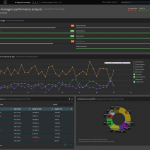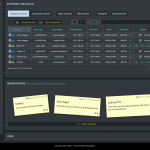The Challenge
How to manage growth with a warehouse at maximum capacity
Hampton Build Ltd (not its real name) is a distribution company with a problem that many companies would kill for: they were growing too quickly and struggling to manage the process.
Hampton’s sales had increased by 25%, but their warehouse was already at maximum capacity. There was no room to hire extra workers and they had no time to build another warehouse, and their dispatch process was slowing down in the meantime.
They needed an increase in employee productivity — and they needed it fast.
The solution
It’s all about accountability
The solution
The practical capacity of a warehouse is usually estimated at about 80% of its theoretical capacity, but in Hampton’s case it was estimated at about 63.5%. A change of work culture with a higher focus on productivity was required.
As a result, senior management decided to offer an incentive scheme to encourage healthy competition between employees. A monthly bonus was awarded to each of the winners in four different categories:
- Highest number of lines prepared for delivery
- Highest number of orders
- Largest total volume
- Greatest total weight
By creating four different categories, Hampton removed the chance of an employee winning outright at the start of the month thanks to a “lucky” order. They knew that if there was only one category and someone took a huge lead at the start of the month then there’d be no incentive for employees to try to catch up.
The implementation
We developed an application which imported SAP data about each “Goods Issue for Work Order“. The application saved the data and then computed the KPIs that the scheme required. The results were then displayed in a dashboard using intuitive data visualization tools.
Note: Receiving accurate data in (close to) real-time from SAP was an interesting challenge that we might delve into as a dedicated case study. Keep your eyes peeled!
Based on the transparency principle, the dashboard was available for everybody involved, from management and team leaders to individual workers. Large displays were installed in the active zones and in the restroom that showed current rankings and recent changes for each category.
The layout also displayed a comparative analysis and was supported by an intranet page on which employees could see details about other workers’ activity.
The results
No one likes to come last
The incentive
The incentive scheme worked. The chance of winning prizes and recognition and of being a part of the company’s success led to an overall increase in productivity of 27%. Better still, Hampton was able to deal with its sudden growth and to buy itself some time to build a new warehouse.
The overall result was that thanks to the 27% increase in productivity, Hampton saw a return on investment for the software application in less than five months.
The work culture has also significantly improved. Offering formally recognized performance measurement and tangible awards to top performers led to a drastic change in the company’s culture — and it’s all for the good.
The secondary effect: accountability
Low performers could no longer hide behind the team as the numbers clearly showed individual performance. Some employees discovered an amazing ability to boost productivity while others decided to look for a new job. This allowed Hampton to remove the dead weight and to change employee attitudes for the better.
The 5th bonus: Hampton also introduced an incentive for all team members if the general productivity level reached an ambitious target that was set on a monthly basis. This meant that low performers faced additional pressure from the rest of the team, who pushed them to work harder.
And just think – it was all possible thanks to the “simple dashboard” that made everything so fair and transparent.
Don’t try this at home
It might not work for everyone
This case study represents a small part of a larger project. It doesn’t represent our professional advice on any given situation and may not be applicable to any other company. Every company is different and without taking a look at the bigger picture, the solution for Hampton might not work as intended.
If you’d like to know how to apply the techniques from this case study to your company then get in touch.
We’d love to chat to you about your business challenges.
Got a cool idea?
Let’s talk and make it happen. The coffee’s on us.



